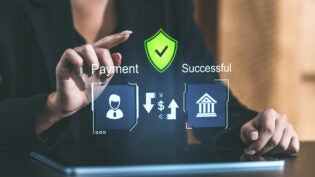
In December a medium-sized business announced they would launch e-invoicing on New Year’s Day. While the company’s finance department was thrilled, their customers were underwhelmed. Most customers had their doubts — and some even refused. “Our company is not ready,” was the frequent refrain.
It has been estimated that the average cost of sending a paper invoice is $4. While that sounds inflated, consider the costs involved in preparing, printing and mailing. That number isn’t far off.
Advantages to Both
There are some advantages to e-invoicing for both buyers and sellers. These include:
- Electronic invoices make distribution easier, faster and — almost — zero expense.
- Invoices arrive sooner without ‘being lost’ by the customer.
- Customer’s questions about information contained in the invoices are handled up to three weeks quicker.
Cost Savings
E-invoicing runs a moderate cost of about $2.15. For accounts payable that total is higher. Overall, e-invoicing can bring savings in the 60-80% range.
Another hidden savings is the reduction in time required. Invoices don’t have to be created, organized and managed. Rather than scanning paid-up invoices and recording them, e-invoices are automatically uploaded.
Flexibility
Once customers make the shift, they will appreciate the benefits and enjoy the flexibility and convenience of having various payment choices including:
- Credit card
- Debit card
- ACH, or
- Perhaps Bitcoin
Your customers can take control of their finances as paying electronically permits them to pay at the closing second, with the hidden advantage of being able to observe their account in real time.
If you include a “Pay Now” link in your invoice, the billing process becomes even more streamlined. The more pain you can remove from the invoicing process, the less stress the customer has and the more apt they are to develop a long-term alliance with you.
Some Facts
So what did the business learn and how can you learn from their methodology? Plenty, it seems.
The business decided to purify the customer register first. That proved labor-intensive as only 20 percent of buyers had confirmed their email address within the first thirty days.
Despite it being almost five months later, still only 20% have verified. The company’s goal of getting 90% of their customers switched to accepting e-invoices by the end of the year may not happen. To avoid this, here are some helpful things to keep in mind.
Tips & Tricks for Starting E-Invoicing
Up-To-Date
Make sure the database is current and use the changeover as an occasion to update not only customer addresses but other contact information.
Don’t Assume
Don’t assume that your client’s system is functioning correctly, even after receiving payment of the first e-invoice. Since most businesses have not yet installed e-invoice processes — nor software — it is usually an actual person who needs to take action when receiving the e-invoice.
Follow Up
Follow up with customers in a consistent manner and do it often. Send statements on a regular basis so buyers will get used to expecting them.
Conclusion
Ease of distribution, cost-savings, and convenient payment options all make e-invoicing the most streamlined and efficient process for modern B2B transactions. Will you make the switch?
2885 Views












